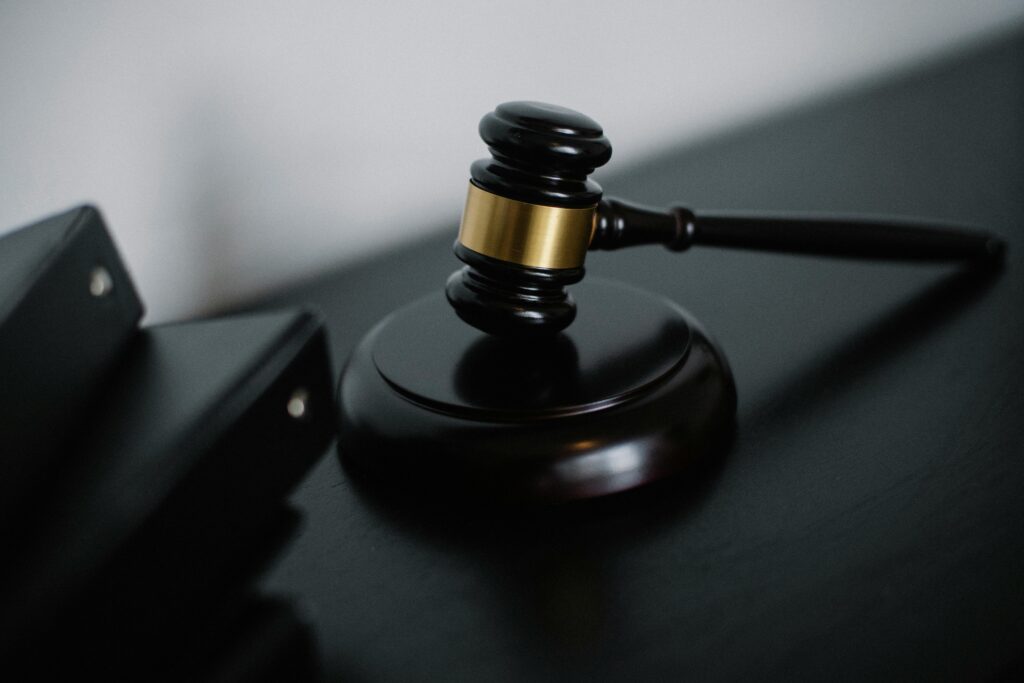Published On: 9th April, 2024
Citation no: AIR 1973 SC 1461[1]
INTRODUCTION:
The Kesavananda Bharti case is a landmark legal precedent taken by the Supreme Court that outlines the Basic Structure of Doctrine in the Constitution. The Ratio Decedendi was very insightful and special. The 700-page judgement provided a solution to the Parliament to amend laws and for the citizens to protect their fundamental rights. The concept of Doctrine of Basic Structure was introduced to solve some unanswered questions in the cases of I.C Golaknath vs State of Punjab (1967).[2] The Basic Structure of Doctrine was introduced to ensure that certain amendments would protect the rights of the citizens which were guaranteed to them by the Fundamental rights as enshrined in the Constitution.
FACTS:
- Keshavananda Bharti was the head of the Edneer Mutt in Kasaragod District of Kerala. He had certain pieces of the land in the sect which were owned by him.
- The Kerala Government introduced the Land Reforms Amendment Act,1969. According to certain provisions of the Act, the Government was entitled to acquire the piece of the land which was owned by Kesavananda Bharti.
- Keshavananda Bharti moved the Supreme Court under Art. 32 of the Indian Constitution for enforcement of rights as guaranteed under Art 25, Art 26, Art 14, Art 19(1)(f) and Art 31. While the hearing for the petition was underway, the Govt. of Kerala, by then, had introduced the Kerala Land Reforms (Amendment) Act, 1971.
- The Parliament, after the Golaknath case, passed out a series of Amendments to overrule the judgment of the former case. The 24th Amendment was passed in 1971. Subsequently, the 25th & 29th Amendment was passed in 1972.
24th, 25th and 29th Amendments:
The 24th Amendment was introduced to the Indian Constitution in 1971. This amendment ensured that Parliament could amend any part of the Constitution, including fundamental rights, without judicial review.
The 25th Amendment, passed in 1972, was primarily focused on land reform laws. It aimed to validate certain land reforms enacted by various state governments, particularly those related to abolishing zamindari systems and redistributing land to farmers.
The 29th Amendment, also enacted in 1972, was introduced to address specific electoral issues in India. It extended the term of the Lok Sabha (the lower house of Parliament) and state legislative assemblies from five to six years. The amendment aimed to provide stability and continuity in governance by ensuring longer terms for elected representatives.
Issues Raised:
- Whether the 24th Amendment was Constitutionally valid or not?
- Whether the 25th Amendment was Constitutionally valid or not?
- To what extent the Parliament can exercise its power to amend the Constitution?
Arguments by the Plaintiff:
- The plaintiff argued that the Parliament has no right to amend the Constitution in the way it wanted to. The Parliament cannot use its power to amend the Constitution by changing its basic structure as mentioned in the precedent of Sajjan Singh vs State of Rajasthan (1964).[3]
- It was also argued that the 24th and the 25th Amendments clearly infringed the Fundamental Right that was guaranteed by the Constitution under Art 19(1)(f). Fundamental Rights are an integral part of a citizen’s life and if any amendment snatches such a right, then that freedom is taken away from them.
Arguments by the Defendant:
- The defendant argued that the Parliament is the supreme authority for the basic structure of the Indian Legal System and the Parliament has the power to amend the Constitution.
- It was also argued that the Parliament exercises its power to amend the constitution without any limitations to fulfil its socio-economic obligations guaranteed to the citizens under the Preamble.
JUDGEMENT:
- In a majority verdict of 7:6, Their Lordships observed that the Parliament can amend any provision of the Constitution to fulfill its socio-economic obligations on the condition that such amendment will not change the basic structure of the Constitution
- The majority was delivered by Justice S M Sikri, S. Hegde, B.K. Mukherjea, J.M. Shelat, A.N. Grover, P. Jagmohan Reddy, H.R Khanna. Whereas, the minority opinions were written by A.N. Ray, D.G. Palekar, K.K. Mathew, M.H. Beg, S.N. Dwivedi & Y.V. Chandrachud.
- The court also upheld the entire 24th Amendment but the 1st and 2nd part of the 25th Amendment was declared intra vires and ultra vires. It was also deduced by the court that the Parliament has the power to amend the Constitution to the extent that such amendment does not change the basic structure of the Indian Constitution and that the Basic structure of the Doctrine was to be followed while amending the provisions enshrined in the Constitution.
Reasoning:
- Majority of the Bench aimed to preserve the Indian Constitution by safeguarding its basic features.
- Concerns arose regarding the misuse of unlimited power by Parliament to amend the Constitution according to its own preferences.
- Fear existed that unrestrained parliamentary authority could alter the fundamental essence of the Constitution.
- The doctrine of Basic Structure was proposed as a middle ground to protect the rights of both Parliament and citizens.
- Despite numerous amendments (around 150) since the Constitution’s commencement in 1951, the spirit and ideas of its framers have remained intact.
- A comparison with the United States, which has passed only 27 amendments in 230 years, highlights the significant number of amendments to the Indian Constitution.
- The Kesavananda Bharati case is seen as pivotal in providing stability to the Constitution and preserving Indian democracy.
- Although the petitioner did not entirely win the case, the judgment of the Bench ensured the Constitution’s spirit remained intact, serving as a safeguard for Indian democracy.
- The Doctrine of Basic Structure establishes that Parliament’s power to amend the Constitution is unlimited, with the caveat that amendments must not alter the basic structure.
- The court clarified that the basic structure of the Constitution, although not explicitly defined, is crucial for its essence and integrity, and any amendment altering it would be impermissible.
- The Kesavananda Bharati case partially overruled the Golaknath case, addressing the unanswered question regarding Parliament’s power to amend constitutional provisions.
- The court interpreted the term ‘amend’ in Article 368 to exclude amendments that change the basic structure, necessitating a test to determine if proposed amendments violate it.
- Parliament can amend Fundamental Rights if they do not form a part of the basic structure.
- The 24th Amendment was upheld, affirming Parliament’s power to amend the Constitution, while the 25th Amendment’s second part was struck down.
- The validation of the 25th Amendment was subject to two conditions: ensuring that compensation provided to landlords under land reform laws is reasonable and related to present market value, and striking down provisions limiting the judiciary’s jurisdiction.
CONCLUSION:
- The Kesavananda Bharati case had a profound impact on Indian constitutional law and governance. It established a crucial precedent that has guided subsequent judicial decisions and constitutional interpretation in India. The Basic Structure Doctrine has served as a bulwark against arbitrary changes to the Constitution, safeguarding its core principles and values.
- The case also reinforced the principle of judicial independence and the separation of powers, ensuring that the judiciary maintains its role as a check on legislative and executive actions. It underscored the importance of upholding the rule of law and protecting constitutional principles from undue encroachment.
- The Kesavananda Bharati case is widely regarded as a landmark judgment that has shaped India’s constitutional democracy. It remains a cornerstone of Indian constitutional jurisprudence and a testament to the judiciary’s commitment to upholding the Constitution’s principles.
- The case’s legacy extends beyond its immediate legal implications, influencing debates on constitutional reform, federalism, and the balance of power between different branches of government. It serves as a reminder of the enduring importance of constitutional values and the need to protect them from erosion.
- In conclusion, the Kesavananda Bharati case stands as a defining moment in Indian legal history, reaffirming the supremacy of the Constitution and establishing vital principles that continue to guide the country’s democratic institutions.
- The Kesavananda Bharati case of 1973 established the Doctrine of Basic Structure, asserting that while Parliament has unlimited power to amend the Constitution, it cannot alter its basic structure.
- This doctrine safeguards the fundamental principles of the Constitution, ensuring its integrity and spirit.
- The case partially overruled the Golaknath case and clarified that amendments changing the basic structure require judicial scrutiny.
- It upheld the 24th Amendment, affirming Parliament’s amending power, but struck down the 25th Amendment’s second part.
- The court ruled that compensation provided to landlords under land reform laws must be reasonable and related to market value.
- Additionally, provisions limiting the judiciary’s jurisdiction were invalidated. The judgment provided stability to the Constitution, preserving Indian democracy, and protecting its foundational principles.
- The case clarified the distinction between ordinary law and constitutional amendments and upheld the judiciary’s role in interpreting if proposed amendments violate the Constitution’s basic structure.
- The landmark case of Keshavananda Bharti provided stability to the Constitution. Although the petitioner lost the case, The judgment worked out to be a savior of the Indian democracy and saved the Constitution from losing its spirit, without violating it.
References:
- https://indiankanoon.org/doc/257876/
- AIR 1967 SC 1643
- AIR 1965 SC 845
- https://blog.ipleaders.in/kbharatikerala/




